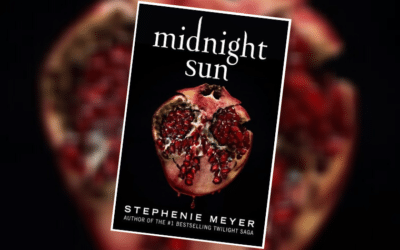Warning: Spoilers ahead. You can also Google them, as this is a real story
Sister Cathy Cesnik goes missing one November night in 1969 during a shopping trip to buy an engagement gift for her younger sister. Though her car is found soon after, her body is not discovered until several months later. And now, some fifty-odd years after, it is the coldest of cold cases until two women who were students of Sister Cathy’s at Archbishop Keough High School, an exclusive girls’ Catholic school in Baltimore, decide to investigate.Along the way, we are treated to a smorgasbord of every possible horror that you’re likely to conjure when considering what could go wrong when religion and sin are used as weapons in sexual abuse. Though many theories are floated, with some more likely than others, we are never given the satisfaction of a definitive answer to the overriding question: Who killed Sister Cathy? However, the “why” seems crystal clear.
The Cagney and Lacey of The Keepers are Gemma Hoskins and Abbie Fitzgerald Schaub. Despite the many years since Sister Cathy was their instructor, Gemma and Abbie have never forgotten her – she was one of those incredibly memorable teachers that most of us have been lucky enough to encounter at some point in our academic careers. Sister Cathy was a young woman teaching young women, and it had always bugged Gemma and Abbie that no one was ever punished for the death of this incredibly vibrant and inspirational teacher. They set out to change that.

But aside from Gemma and Abbie, the other beating heart of The Seekers is the erstwhile “Jane Doe” now identified as Jean Hargadon Wehner. After most of a lifetime trying to repress the horrors of her abuse, Jean Wehner begins to recover her memories of those terrible years. A victim of abuse as a child by an uncle, Jean was wracked with guilt about having somehow caused the abuse, and she did what any good Catholic girl would do – she went to confession. But the predatory Father Neil Magnus tells Jean that he would like to know her name and look at her after her confession. This was the start of the nightmare.

Naïve and unworldly, Jean believes the bizarre assertions of Fr. Magnus who tells her that he’s not sure that God can forgive her as he repeatedly sexually assaults her as a way to expiate her sins. For “help,” he turns Jean over to Father Joseph Maskell who begins the systematic sexual abuse of Jean, inviting policemen and others to join in.

Would you be surprised to learn that Father Maskell had been relocated to this school after allegations of abuse at his previous school? Further, would it surprise you that all records having to do with assertions of abuse against this so-called priest have mysteriously gone missing? How about the fact that neither the Archdiocese nor the police will admit that there were similar claims of abuse, which there were from a breathtakingly large number of young women? Or that there was no record of the altar boy’s claim of abuse that had gotten Father Maskell transferred to Jean’s H.S. in the first place? Somehow, every institution from which you might have a reasonable expectation of redress fell down in its responsibilities. Every. Single. Time. No, we are not surprised about this because we are intelligent people who read newspapers. We know that this is all par for the course. Nobody ain’t seen nothin’.
If I have a quibble about this compelling docu-series it’s this: it was a bit repetitive, and in my opinion, 5 episodes would have been sufficient to document the absolute outrage of these events and the lack of response from the institutions. But I have a thing about editing: I feel that directors begin to fall in love with what they do and are unable to look objectively at their material and realize that cutting and trimming would serve them well. (Mr. Scorsese and Wolf of Wall Street, I’m looking at you.) Tightened up, this would have made an even more devastating series.
But despite the horrors of this series, there are aspects of it that I do find to be absolutely marvelous. Mostly, it’s the sense of girl-power and the female solidarity that drive Gemma, Abbie and Jean ever forward. An all girls’ school should have been the place where these young women learned empowerment (perhaps a 21st century construct), as well as a way to live as women of faith in their communities and families. Instead, their school was transformed into a house of horrors. And here’s another fabulous thing – all our protagonists are women – real women – who wear their years unapologetically.
And I begin to think that maybe the worldliness of many teenagers today is a good thing. Had Jean been less naïve, it might have been more difficult to victimize her. And here is where things like social media and cell phones also come in. In 1969, it would have been very unusual for someone to have a camera with them at all times, to say nothing of videos and voice recorders. Somehow, I think that these changes in our world make the kind of abuse we see here much, much more difficult to pull off. At least, I hope so…
Written by Roseanne
 Roseanne Leto is a 25-year veteran of the TV industry. She has been head of East Coast Programming and Development for CBS, an Associate in Programs at NBC, and a Producer of many TV movies. When it comes to TV, she is picky, picky, picky, and despite her years in TV, Charles Dickens is still her bae. Follow her on Twitter @roxlet
Roseanne Leto is a 25-year veteran of the TV industry. She has been head of East Coast Programming and Development for CBS, an Associate in Programs at NBC, and a Producer of many TV movies. When it comes to TV, she is picky, picky, picky, and despite her years in TV, Charles Dickens is still her bae. Follow her on Twitter @roxlet
Source- Feature Image, all other images courtesy of Netflix




